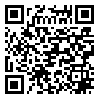Volume 9, Issue 1 (2024)
Manage Strat Health Syst 2024, 9(1): 87-99 |
Back to browse issues page
MSc in Industrial Management, Department of Management, School of Economics and Administrative Sciences, University of Qom, Qom, Iran , Aminferdowsi74@gmail.com
Abstract: (67 Views)
Objective: Payment systems in healthcare organizations are critical, behavioral, and dynamic. Given the existing challenges in payment systems, characterized by imbalances in payment amounts and inequitable ratios within and across job categories, there is a pressing need for a novel model to configure desired payment systems which proposed in this paper.
Information sources and selected methods for study: A narrative review was conducted using the PubMed, and ScienceDirect databases with the keywords "payment methods" or "payment system" and "characteristics" or "components" and their Persian equivalents. A total of 16 articles were selected. Additionally, protocols for physician compensation methods and nursing service tariffs from the past five years were obtained and reviewed from the Ministry of Health website. Finally, a novel model was developed based on the research team's expertise and inspired by the Iranian Tar instrument.
Results: The Iranian Tar Model is introduced as a guide for configuring desired payment systems. This model incorporates six tuning pegs (sufficiency, savings, desired behavior, ease of calculation, distinction, and equity) paired in twos within three axes for configuring payment systems. The positioning of common payment systems (including salary, capitation, Fee-for-Service, and Pay for Performance methods) within the three axes of the model is examined.
Conclusion: Previous studies have addressed payment system parameters in isolation, with limited attention to their interconnectedness. The Iranian Tar Model's six interrelated tuning pegs empower organizations to effectively configure their payment system at individual, intra-group, and inter-group levels.
Information sources and selected methods for study: A narrative review was conducted using the PubMed, and ScienceDirect databases with the keywords "payment methods" or "payment system" and "characteristics" or "components" and their Persian equivalents. A total of 16 articles were selected. Additionally, protocols for physician compensation methods and nursing service tariffs from the past five years were obtained and reviewed from the Ministry of Health website. Finally, a novel model was developed based on the research team's expertise and inspired by the Iranian Tar instrument.
Results: The Iranian Tar Model is introduced as a guide for configuring desired payment systems. This model incorporates six tuning pegs (sufficiency, savings, desired behavior, ease of calculation, distinction, and equity) paired in twos within three axes for configuring payment systems. The positioning of common payment systems (including salary, capitation, Fee-for-Service, and Pay for Performance methods) within the three axes of the model is examined.
Conclusion: Previous studies have addressed payment system parameters in isolation, with limited attention to their interconnectedness. The Iranian Tar Model's six interrelated tuning pegs empower organizations to effectively configure their payment system at individual, intra-group, and inter-group levels.
Keywords: Payment methods, Payment system, Healthcare, Iranian Tar Model, Salary, Fee-for-Service, Capitation, Pay for Performance
| Rights and permissions | |
 |
This work is licensed under a Creative Commons Attribution-NonCommercial 4.0 International License. |




